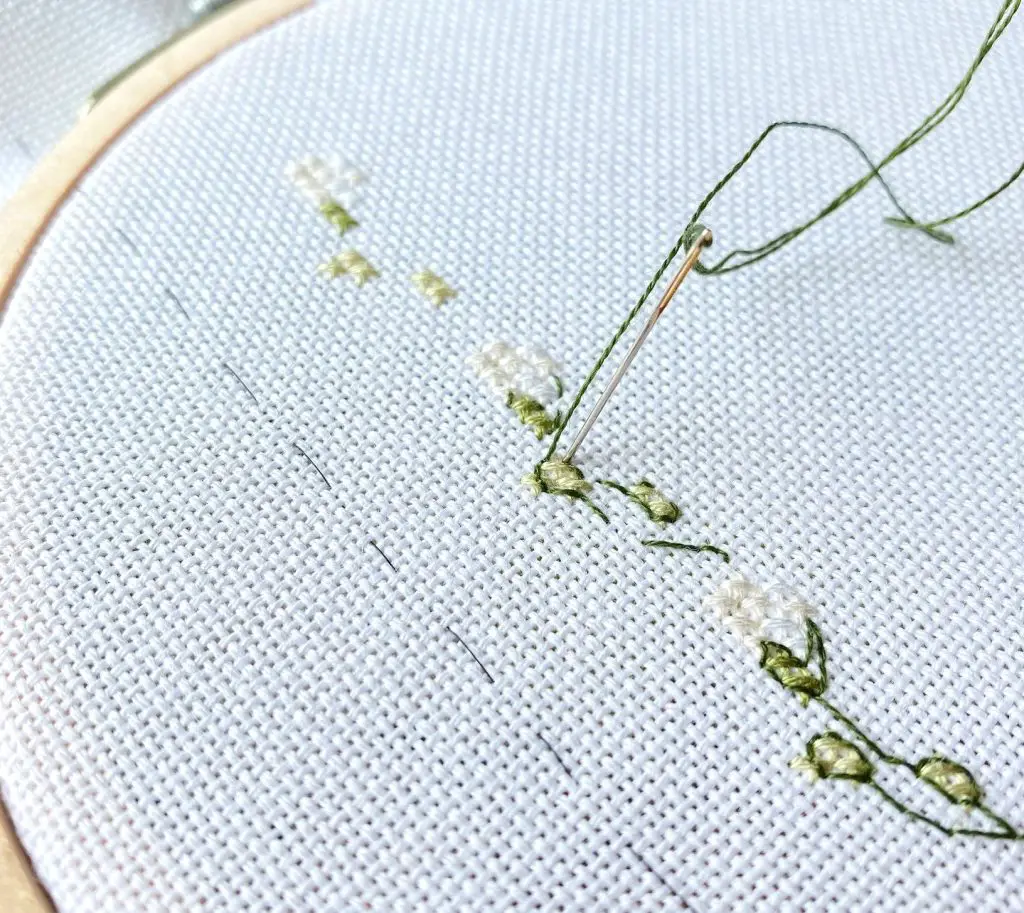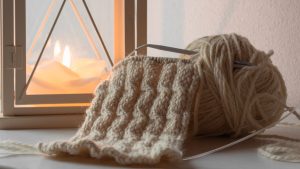Cross stitch, once a necessity for clothing repairs and household linens, has now become an art form enjoyed by enthusiasts around the world. This centuries-old technique is known for its intricacy, precision, and aesthetic appeal.
It has great charisma and is capable of elevating any space with its charm, from creating traditional designs to contemporary styles. It’s no surprise that this craft is popular among both hobbyists and collectors.
It is not just for those with patience; it is also an excellent way to relax, destress, and practice mindfulness in today’s fast-paced world. The meditative art form also allows you to take pride in creating something unique and personal.
From the simplest designs to the most complex masterpieces, all works tell a story and have a unique meaning.
Contents
The Fascinating World of Cross Stitch
This blog post will delve into the fascinating world of cross stitch, exploring its origins, the skills and the tools required to master this popular needlework art. It will also explore the different types available and provide tips on how to create stunning pieces.
The craft has a rich history, dating back to ancient times, and its popularity has endured throughout the centuries. Whether you are a beginner or an experienced stitcher, this post will provide valuable insights and guidance on how to create beautiful cross-stitch pieces that will stand the test of time.
History of Cross stitch
Cross stitch is an age-old needlework technique that has been passed down through generations. Its origins date back to ancient times when people used needlework to embellish clothing and household items.

In the middle ages, it became popular among European royalty who used the technique to create intricate designs on clothing, tapestries, and other decor items. During the 18th and 19th centuries, it gained popularity in the middle class as a way to decorate household linens and clothing. It was during this time that various patterns began to appear in magazines and books, increasing the accessibility of the craft.
Today, it has evolved into a popular hobby and art form, with stitchers creating intricate designs on everything from fabric to cardboard. The history of cross stitch is a rich tapestry of tradition and innovation, and it continues to inspire stitchers and artists around the world.
Benefits of Cross Stitch
Cross stitch is an art form that has been around for centuries and continues to be a popular hobby even today. There are numerous benefits to taking up this tradition, from reducing stress and anxiety to improving hand-eye coordination and cognitive functions.
It is a meditative and relaxing activity that can help individuals deal with the pressures of daily life. The repetitive stitching movements can help improve blood pressure and heart rate, thereby promoting relaxation and stress relief.
Additionally, the act of counting and following patterns in cross stitch can improve problem-solving skills and focus. It is a rewarding and fulfilling hobby that offers numerous physical and mental health benefits.
Ultimately, it allows you to create unique and beautiful designs that can’t be replicated with other materials, just like with bead embroidery, also a well-loved craft.
Tools Needed for Cross Stitch
Cross stitch is a beautiful and rewarding art form that requires a few essential tools. To get started, you will need a few basic tools:
Aida fabric or other fabric suitable for cross stitch
Aida fabric is a popular choice because it has a grid of evenly spaced holes that make it easy to count stitches. Other fabrics that can be used for cross stitch include linen and evenweave fabric. Linen is made from flax fibres and has a natural, irregular texture that gives cross-stitch designs a rustic look.
Evenweave fabric is a cotton or linen blend that has a smooth, uniform texture that is ideal for more intricate designs.
Embroidery floss

Embroidery floss is the thread that is used to create the stitches. It comes in a wide variety of colours and is usually made of six strands that can be separated for different effects.
Needles
Cross stitch needles are typically shorter and have a larger eye than regular sewing needles. They are designed to easily pass through the holes in the fabric.
Embroidery hoop
An embroidery hoop is a circular or oval frame that holds the fabric taut while you stitch. It can be helpful in keeping your stitches even and preventing the fabric from wrinkling or puckering.
Scissors
You will need a good pair of scissors to cut the embroidery floss and create a masterpiece.
Pattern
A cross-stitch pattern is a chart that shows you where to place each stitch. Patterns can be found in books, online, or even created by yourself.
Optional tools:
Thimble
A thimble can be used to protect your finger while stitching.
Needle threader
A needle threader is a small tool that can help you thread the needle more easily.
Floss organizer
A floss organizer is a tool that can help you keep your embroidery floss organized and tangle-free.
Light source
A light source, such as a lamp or daylight bulb, can be helpful in providing good lighting for your stitching.
Different Techniques of Cross Stitch
Cross stitch has been a beloved art form. One of the reasons for its strong appeal is the different types of cross stitches available.
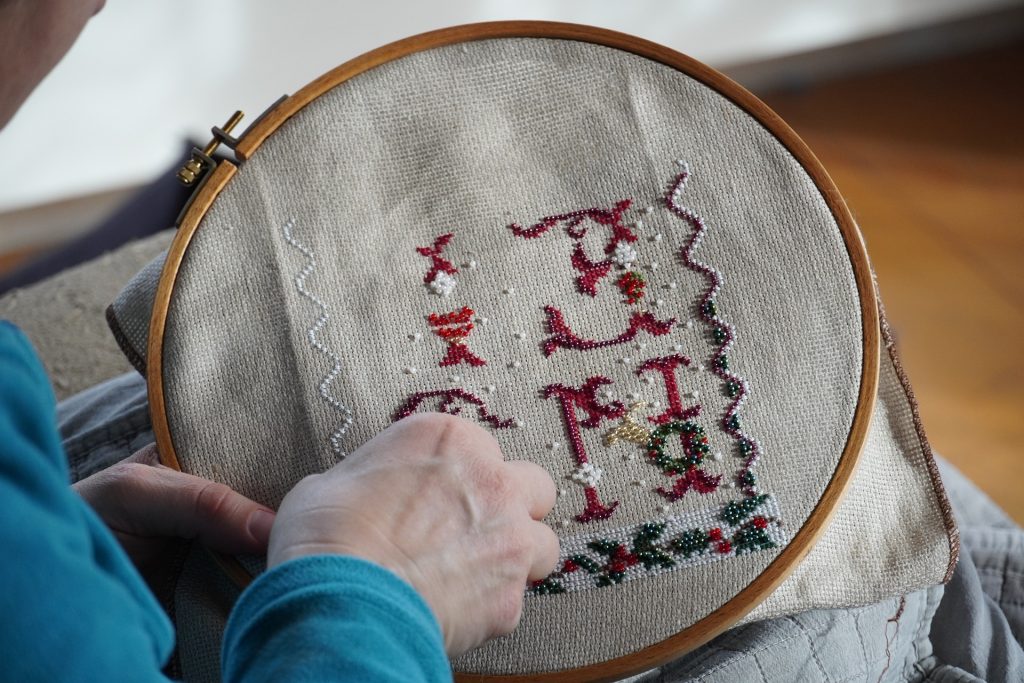
Traditional Cross Stitch
This technique has been used for centuries and is still popular today. However, there are many variations that can be explored to create unique and interesting designs.
One such variation is fractional stitches, which are used to create finer details in a design. Fractional stitches are smaller than regular cross stitches and can be used to create curves, angles, and intricate details.
Another variation is backstitching, which is used to outline or highlight certain parts of a design. Backstitching is created by stitching in a straight line along the back of the fabric and then returning to the front to create a short stitch.
The craft offers a lot of creative flexibility, and there are many techniques and variations that you can use to achieve different effects and suit different design needs/
Stamped Cross Stitch
One popular option is stamped cross stitch, where the pattern is printed directly on the fabric, making it easier to follow along with the design.
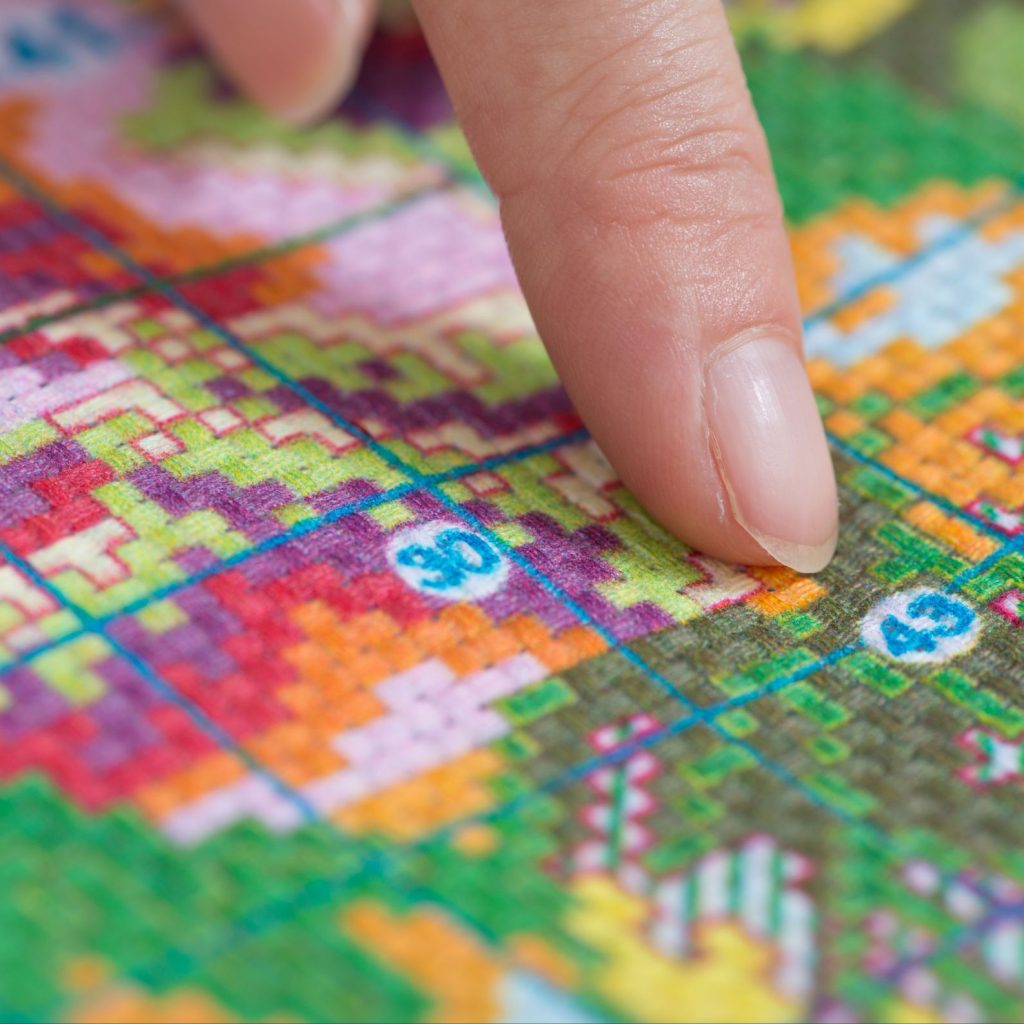
With this type, you don’t have to spend time counting and marking out the grid of X-shaped stitches yourself. Instead, you can simply follow the printed pattern, which will show you where to stitch and what colour thread to use.
Blackwork Cross Stitch
Another type of cross stitch is blackwork, which uses black thread on a light fabric to create intricate, geometric designs.
The stitches are typically worked in a repeating geometric pattern, often using just one or two types of stitches to create a rich and detailed texture. It is still popular among needlework enthusiasts, and many contemporary designers are putting their own spin on this classic technique by incorporating modern patterns, colours, and fabrics.
Hardanger Cross Stitch
Hardanger is a type of cross stitch that incorporates cutwork and drawn thread techniques for a more textured finish.
The fabric is first worked with a series of satin stitches, and then a combination of threads is cut and removed to create a lacy effect. The remaining threads are then grouped together and woven using needlework techniques to create geometric shapes, often in a diamond or square pattern. This creates a textured finish that is similar to lace.
Counted Cross Stitch
Counted cross stitch, where the stitches are carefully counted and plotted on a pattern before being executed on the fabric.
The fabric is marked with a grid of squares that corresponds to the grid on the chart. Each square on the chart represents a stitch, and the colour and type of stitch are indicated by symbols on the chart.
As you work, you use the chart as a guide to creating each stitch in the appropriate colour and location. The stitches are typically worked in a diagonal or horizontal direction, and the tension and spacing of the stitches are important to ensure that the design looks neat and even.
Tips for a Successful Cross-Stitch Project
Whether you are a beginner or an experienced stitcher, getting into a cross-stitch project can be both rewarding and challenging. To ensure the success of your project, we have compiled a list of five tips to keep in mind.
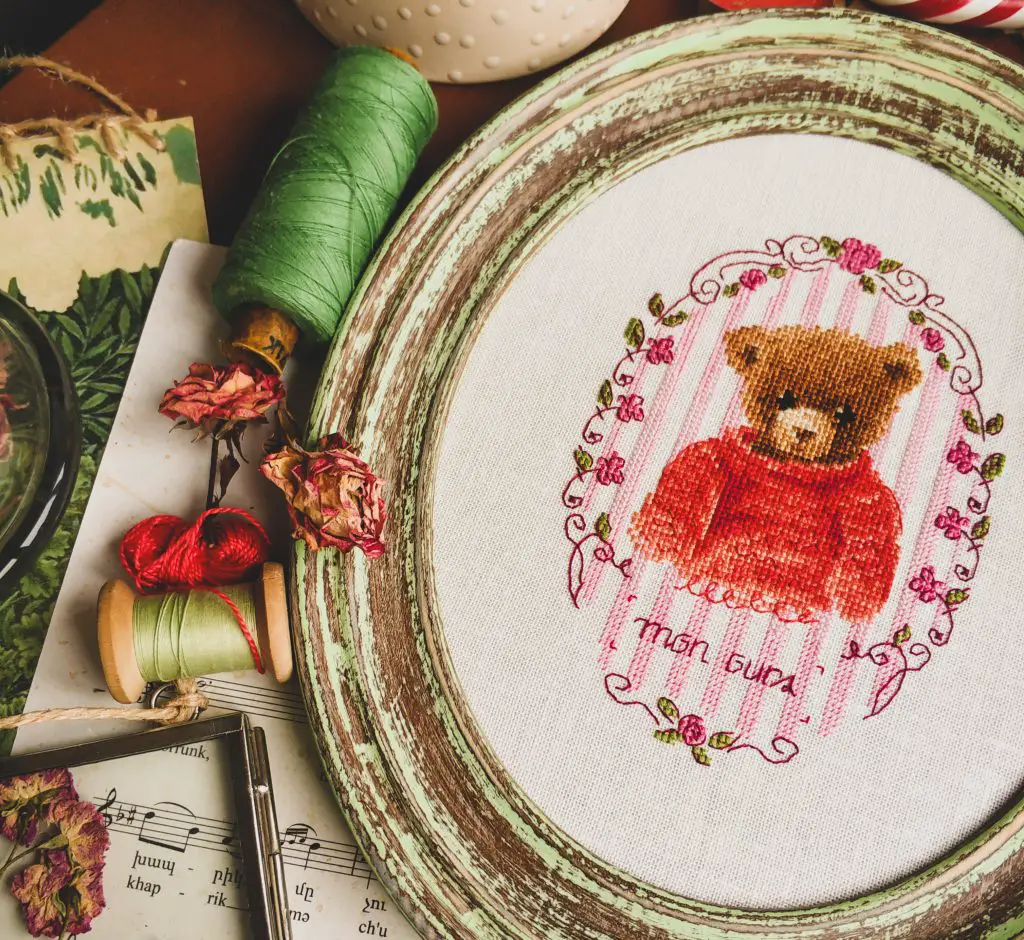
Firstly, it is important to choose the right materials. This means selecting a quality fabric and floss that compliments your design. Secondly, always double-check your pattern before getting started to avoid making mistakes that can be difficult to correct later on.
Thirdly, take the time to organize your materials and set up a workspace that is comfortable and well-lit. Fourthly, maintain good posture while stitching to prevent muscle strain and fatigue. And be patient and enjoy the process!
Cross stitch is a meticulous art form that requires focus and dedication, but the end result is always worth it.
Summary
To sum it up, cross stitch remains a beloved hobby for crafters of all ages and skill levels. Whether creating a family heirloom or adding a personal touch to a gift, the charm and simplicity of cross stitch offer a creative outlet with numerous possibilities.
As we appreciate the time-honoured tradition of cross stitch, we can also embrace the ridiculous potential for unique designs and modern adaptations. The art of cross stitch truly is a beautiful tradition.

